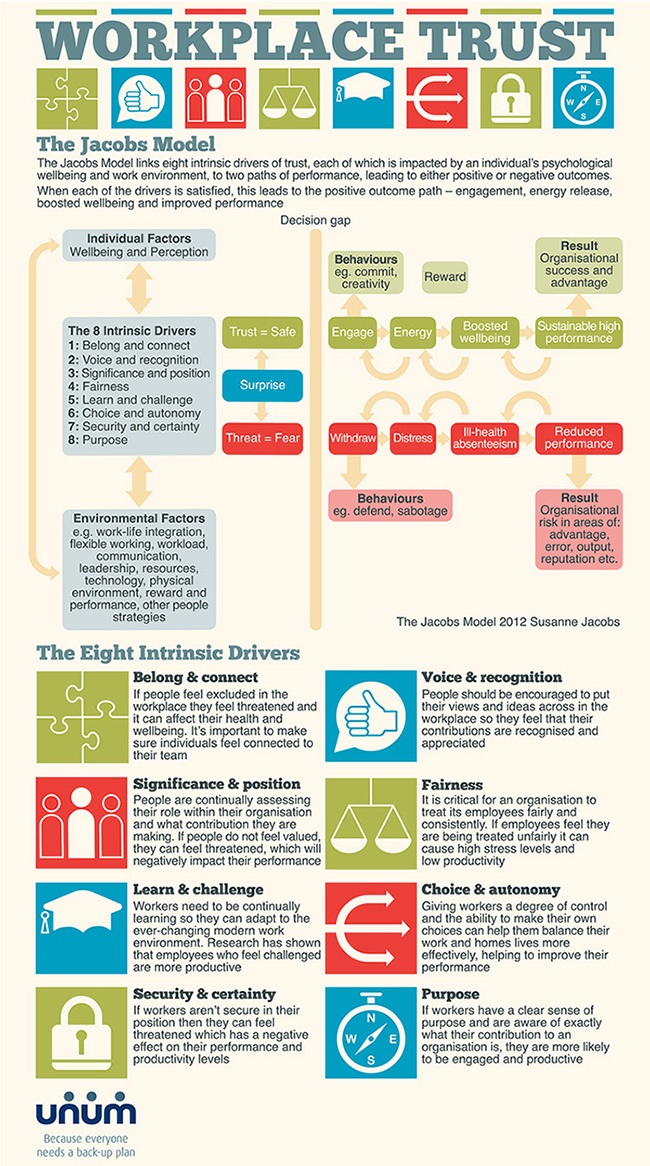 There’s an important connection between trust and happiness. Regardless of how many times we are lied to or are disappointed by others, there’s something in us that wants to trust again. Trust forms when people in a relationship have confidence that the other person will look out for their best interests and be honest.
There’s an important connection between trust and happiness. Regardless of how many times we are lied to or are disappointed by others, there’s something in us that wants to trust again. Trust forms when people in a relationship have confidence that the other person will look out for their best interests and be honest.
Author Eric Weiner writes, “Trust is a prerequisite for happiness. Several studies have found that trust – more than income or even health – is the biggest factor in determining our happiness”.
Building a culture of trust in the workplace is a practical way to foster an environment of happiness and productivity. Research proves that social trust can help a group navigate stress effectively. A fascinating study after the Japanese Earthquake of 2011 revealed that a culture of trust and happiness can actually be strengthened by disaster. However, it’s possible to be aware of the value of trust in an organization without having a clue how to develop it.
I wasn’t familiar with “The Jacobs Model” until I saw this infographic on “Workplace Trust”. It inspired me to learn more about Susanne Jacobs, a specialist in employee engagement and a chartered fellow in the NeuroLeadership Institute (that sounds pretty cool, doesn’t it?). She offers that there are 8 Intrinsic Drivers that lead to psychological well being in the work environment. These 8 drivers lay a track for workplace trust and happiness to run on.
8 Intrinsic Drivers that Build Workplace Trust
1. Belong and connect: make sure people feel connected to their team
2. Significance and position: If people don’t feel valued they can feel threatened, which negatively impacts their performance
3. Learn and challenge: Research shows that employees who feel challenged are more productive
4. Security and certainty: If workers aren’t secure in their position, they can feel threatened leading to negative effects on performance and productivity levels
5. Voice and recognition: People should be encouraged to express views and ideas in workplace so they feel their contributions are recognized and appreciated
6. Fairness: Employees feeling like they aren’t being treated fairly can cause high levels of stress and low productivity
7. Choice and autonomy: Giving workers a degree of control helps them balance work and home lives and improves performance
8. Purpose: Workers with a clear sense of purpose are more likely to be engaged
Employee engagement is a term you will be hearing a lot about in the days ahead. Building a culture of trust is one of the keys to attracting and keeping talented, healthy people with shared vision and values. When your team moves beyond working together and they “do life” together, you’ve got the gold.
Workplace Trust
Infographic by the team at Unum UK


More posts on trust:
Trust: The Critical Factor That Changes Everything
The Single Most Important Word in Leadership

Wonderful article I will be sharing – Your Intrinsic Drivers provide excellent direction, this should be mandatory reading for all managers, CEO’s ..
Again thank you
Thank you for reading and leaving a comment, Diana. As a business culture catalyst, the knowledge is the beginning. I love seeing this applied!